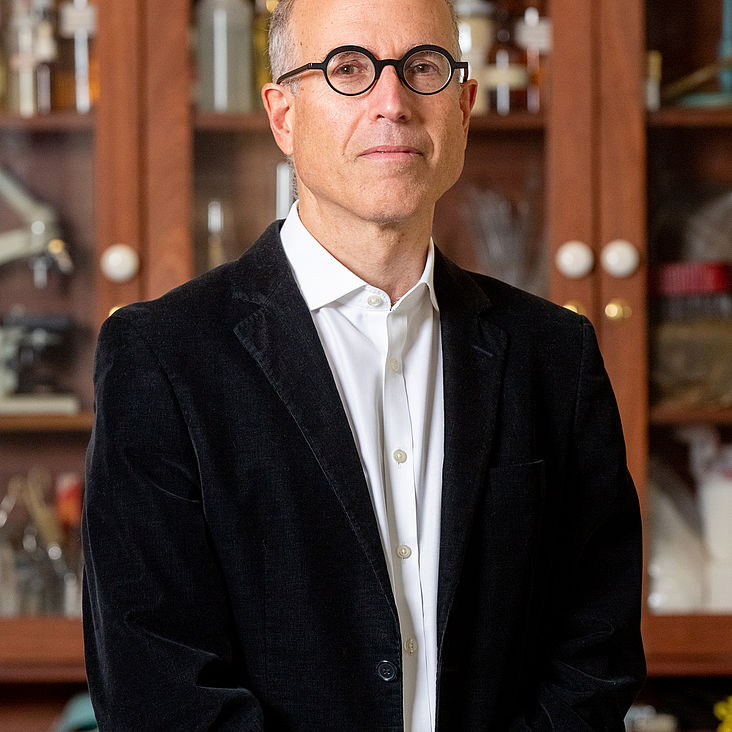
MacArthur x BGC: What is Research?
With An-My Lê, Terry Plank, and Marina Rustow, moderated by BGC dean, Peter Miller
Research may well be the key word in our contemporary knowledge culture, with global investment in research across all industries estimated at $1 trillion, and its importance acknowledged by governments, industry, and academia around the world. Yet, the idea of research, the practice of research, and the social life of research is not a subject of reflection. Of the 164 million items in the catalogue of the Library of Congress, only 43 fall into the category “Research—History.” To begin the task of understanding research, Bard Graduate Center has gathered a group of artists, scientists, and humanists—all MacArthur “Genius” Award winners—for three evenings of discussion moderated by Dean Peter Miller, himself a MacArthur Fellow. These conversations launch a project on research that will culminate in an exhibition at the Bard Graduate Center Gallery in fall 2023. Other conversations in this series include:
Thursday, October 3, 6–8 pm
Poet Campbell McGrath, biomedical researcher Elodie Ghedin, and theater artist Annie Dorsen
Tuesday, November 5, 6–8 pm
Artist Tom Joyce, physicist Hideo Mabuchi, and neuroscientist Sheila Nirenberg
There is no charge to attend the conversations, but space is limited, so please reserve your tickets in advance.
Supported by the John D. and Catherine T. MacArthur Foundation

Meet the MacArthur Fellows
An-My Lê was born in Saigon, Vietnam, in 1960. Lê fled Vietnam with her family as a teenager in 1975, the final year of the war, eventually settling in the United States as a political refugee. Lê received BAS and MS degrees in biology from Stanford University (1981, 1985) and an MFA from Yale University (1993). Her photographs and films examine the impact, consequences, and representation of war. Whether in color or black-and-white, her pictures frame a tension between the natural landscape and its violent transformation into battlefields. Projects include Viêt Nam (1994–98), in which Lê’s memories of a war-torn countryside are reconciled with the contemporary landscape; Small Wars (1999–2002), in which Lê photographed and participated in Vietnam War reenactments in South Carolina; and 29 Palms (2003–04), in which US Marines preparing for deployment play-act scenarios in a virtual Middle East in the California desert. Suspended between the formal traditions of documentary and staged photography, Lê’s work explores the disjunction between wars as historical events and the ubiquitous representation of war in contemporary entertainment, politics, and collective consciousness.
Terry Plank is a geochemist working literally at the edge of phenomena shaping the Earth’s crust. Her research focuses on what happens when tectonic plates collide, forcing one under the other at a subduction zone. Because these collisions generate tremendous heat, they are frequently associated with volcanoes, which Plank uses as a window to the chemical and physical forces deep below the surface. In early work, she analyzed trace metals in deep core samples from rock entering a subduction zone and compared them with magma ejected from associated volcanoes, finding that the magma unexpectedly includes materials from the subducted crust, rather than exclusively new rock formed from the Earth’s mantle. More recently, she has demonstrated that the chemical composition of volcanic rocks reveals the temperature at the point of rock formation, where the subduction plate intersects the mantle. These data are essential for accurate modeling of tectonic geophysics. Furthermore, her observations of certain volcanic minerals that trap water demonstrate the critical role they play in the geochemistry of rock formation at subduction zones (it is water and other volatiles that account for the volcanic explosions). Though the motion of tectonic plates triggers some of the Earth’s greatest spectacles—earthquakes, pyroclastic lava flows, geysers, etc.—the science of plate tectonics is still in its early stages. With painstaking fieldwork, careful analysis, and profound insight, Plank is uncovering details about the complex interplay of thermal and chemical forces that drives this usually imperceptible but remarkably powerful natural force.
Marina Rustow is a historian using the Cairo Geniza texts to shed new light on Jewish life and on the broader society of the medieval Middle East. The Cairo Geniza (or Genizah) comprises hundreds of thousands of legal documents, letters, and literary materials—many of them fragmentary—deposited in Cairo’s Ben Ezra Synagogue over more than a millennium. Rustow’s approach to this archive goes beyond decoding documents, in itself a formidable task, to questioning the relationship between subjects and medieval states and asking what that relationship tells us about power and the negotiation of religious boundaries. Rustow’s current work addresses Geniza documents in Arabic script from the Fatimid caliphate. Using a bidirectional lens—that is, interpreting the material from the point of view of both the Islamic and Jewish communities—Rustow is mining these documents for what they can tell us about how the caliphal state ruled and how Jewish, Christian, and Muslim subjects related to it. Deploying her considerable prowess in languages, social history, and papyrology, Rustow is rewriting our understanding of medieval Jewish life and transforming the historical study of the Fatimid empire.

